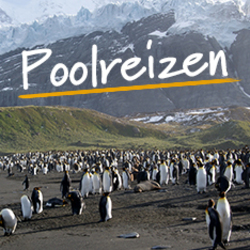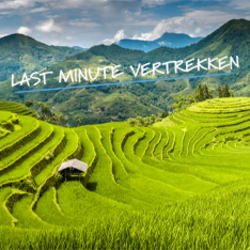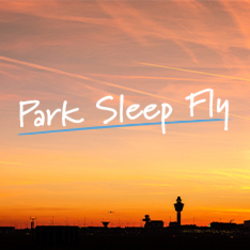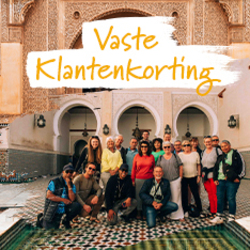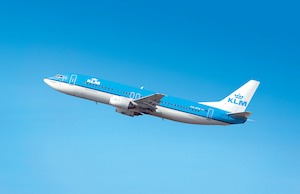Activities
- Wildlife Holidays
- Primates
- Birdwatching
- Wildlife Bestsellers
- — Join a small group in the wilds of Borneo to experience the natural world in full bloom — Enjoy multiple chances to see wild orangutans and visit the Sepilok Orangutan Sanctuary — Visit Mulu National Park in time to see the incredible bat exodus from Deer Cave — Take a dawn cruise along Kinabatangan River – the perfect time to spot wildlife! — Stay at Borneo Rainforest Lodge, an award-winning jungle resort in the Danum Valley
Food
-
1
Start Kuching
Kuching, capital of the Sarawak state, is a vibrant riverside city full of different ethnic groups who migrated here from the surrounding forests. With a great museum and a well-preserved colonial centre there is much to do in this cultural hot spot. You can arrive at any time. There will be a group briefing at 6pm with your tour leader, after which we can have dinner at the waterfront hawkers’ stalls. Accommodation: Hotel Lime Tree (or similar)
-
2
Day trip to Bako National Park to see proboscis monkeys
We enjoy our first foray into the amazing nature of Borneo as we head to nearby Bako National Park, home to proboscis monkeys. Here, the rainforest meets the sea and the only way to get to the park is by boat (after a one-hour drive out of the city). It has abundant wildlife, jungle streams, waterfalls, interesting plants, secluded beaches and trekking trails. Despite being the smallest national park in Sarawak, Bako contains almost every type of vegetation in Borneo. We return to Kuching for the night. Please note, our time at Bako is often dictated by tides and weather conditions. Our leader will inform us of the details the previous day. Accommodation: Hotel Lime Tree (or similar)
-
3
Fly to Mulu National Park; sunset walk to Deer Cave for bat exodus
We leave the city and fly to Mulu National Park (schedules vary). After checking in at the park HQ, we meet the park guides and head through the forest to Deer Cave, the largest cave passage in the world and home to millions of bats and swifts. The floor has a raised platform, though that is no escape from the smell of guano (bird and bat excrement). Nearby is Lang's Cave which, though much smaller, has stalactites and stalagmites and other cave formations. The surrounding forest is spectacular and there is plenty of time to examine it closely. The walk to Deer Cave is 1.9mi (3km) each way along boardwalks and there are wooden steps leading to different viewing platforms inside the show caves. We arrive at Deer Cave in time for dusk, when the bats leave their home to feed on insects (as long as it is not raining). This is a sight to behold with the bats forming a long, snaking line across the sky for quite some time. Dependent on the timings of the day, we may visit the caves tomorrow instead. Please note, due to flight schedules, there isn’t much time for lunch between our arrival at Mulu National Park and when we depart for the caves. You should buy something at the airport to have later. Accommodation: Mulu National Park Garden Cottages (or similar)
-
4
Full day exploring Mulu National Park
Today we explore Mulu with a local guide. In the morning, we visit two of the show caves, including Clearwater, where we can enjoy a picnic lunch (not included) in the gorgeous riverside location. The park has some incredible statistics: it has more than 3,500 plant species, 8,000 types of fungi, and 170 orchid species. There are also 262 bird species, almost 300 butterfly species and many reptiles and mammals. Members of the Penan people also live within the park. They are a small population of nomadic forest dwellers who live as hunter-gatherers. There has been fierce international opposition to the Malaysian government who tried to settle them in permanent longhouses and indeed the Penan themselves have resisted. In 1994, they were granted an area of the forest where they could continue their traditional lifestyle. Although you are unlikely to meet these elusive people, you occasionally see their fishing shelters or areas in the forest where they have recently visited. This afternoon, relax in the park and listen to the weird and wonderful creatures that call it home or explore self-guided trails within the park. Those with a head for heights can try the optional canopy walkway. This 1,575ft (480m) high skywalk takes approximately two hours to complete. Along the way, you may spot macaques, hornbills, flying lizards, squirrels and a variety of rainforest birds. Time slots are subject to availability. In the evening, there is an optional night walk or we can try tuak, the Mulu firewater. Accommodation: Mulu National Park Garden Cottages (or similar)
-
5
Early rise for dawn chorus in Mulu; fly to Kota Kinabalu
This morning we bid farewell to Sarawak and our local Sarawak tour leader and aim to catch the morning flight out of Mulu and onto Kota Kinabalu in the state on Sabah, though delays are not uncommon. Depending on what time we fly out of Mulu, there may be time to walk along self-guided trails or peruse the visitor centre. Known as KK to the locals, the capital of Sabah is a modern, multicultural city. Upon arrival in KK, we meet our Sabah tour leader for the remainder of the trip. The evening is free to relax, explore the busy Filipino markets or enjoy a waterfront sundowner. Accommodation: Hotel Dreamtel (or similar)
-
6
Free day; optional snorkelling and island trip, wetland birdwatching or cultural village
Today you are free to enjoy some of the many activities Kota Kinabalu has to offer. A popular option is to visit one of the tropical islands in the marine park, a 15-minute boat journey from the city and with excellent snorkelling and diving opportunities. You can never be bored here, whether you are relaxing on the white sand, snorkelling or swimming in the warm South China Sea. There are good birdwatching opportunities in the wetlands not far from KK and a culturally interesting village in Mari Mari where you can learn about the different cultures of Sabah. Your tour leader can help organise any of these options. Accommodation: Hotel Dreamtel (or similar)
-
7
To Kinabalu National Park; visit Sabah Tea Plantation
Today we transfer (about two hours) and explore Mount Kinabalu National Park. It’s a Unesco World Heritage site and home to the highest mountain in Southeast Asia, Mount Kinabalu, which stands at (4,095m) tall. This impressive granite peak can be viewed from the Crocker mountain range, which we pass over, with panoramic views of the countryside and soaring hills. The lower mountain slopes are covered in thick vegetation and it is well known for its diverse botanical and biological species. En route, we stop at Nabalu market, where villagers sell their produce and handicrafts. It’s possible to walk through the plantation on your own if you want this afternoon. Tea, medicinal herbs, fruit and vegetables are just some of the local produce. From the plantation, the sunrise with a view of Mount Kinabalu is often spectacular. If we’re lucky, we can see the spectacular rafflesia in flower nearby or en route to the plantation. Accommodation: Sabah Tea Gardens Longhouse
-
8
Visit Labuk Bay Proboscis Monkey Sanctuary en route to Sepilok
We visit the tea factory before we leave the plantation behind and continue our journey to eastern Sabah. Our destination is Sepilok, home to a well-known orangutan rehabilitation centre. The journey is about five hours and we stop at the Labuk Bay Proboscis Monkey Sanctuary to get an up-close look at this extraordinary animal only found in Borneo. We then continue to our lodge in Sepilok. This evening, as dusk approaches, we head to the nearby Rainforest Discovery Centre, which has fantastic bird-watching opportunities (though luck does play a role) as hornbills and Borneo bristleheads are often seen. Orangutans are also spotted during the fruiting season and there is an impressive canopy walkway plus easy walking trails. Accommodation: Sepilok Jungle Resort
-
9
Visit Sepilok Orangutan Sanctuary; optional visit to Bornean Sun Bear Conservation Centre
Up early, there will be the option to enjoy an early morning walk near our resort for more birdlife and wildlife viewing before breakfast. We then visit Sepilok Orangutan Centre, the largest orangutan sanctuary in the world. Here rehabilitated orphans and captured orangutans are cared for until they are ready to be released into the wild. We can see these incredible relations of ours close-up and learn about the threats to their existence. You have the chance to visit both morning and afternoon feedings. There is also an orangutan nursery where youngsters are trained to climb with the aim of reintroduction to the wild. We have the chance to view the youngsters from a special viewing platform that sits behind one-way glass so as not to disturb or influence them. There is the option of visiting the Bornean Sun Bear Conservation Centre, which works to research, rescue and rehabilitate captured bears and provide education to the community. Accommodation: Sepilok Jungle Resort
-
10
Travel to Kinabatangan Wildlife Sanctuary; afternoon river cruise
After breakfast, we depart Sepilok and transfer (approximately two to three hours) to the third-longest river in Borneo, Kinabatangan. Our lodge is by the mighty Kinabatangan River, an area home to an astonishing array of wildlife including 10 primate species, four of which are endemic to Borneo. It has one of the highest concentrations of proboscis monkeys and orangutans in Malaysian Borneo. Other wildlife includes Bornean gibbon, long-tailed macaques, sun bears and barking deer. The Asian pygmy elephant and clouded leopard also inhabit this area, but sightings are rare. There are also more than 200 bird species, including hornbills, eagles, herons, kingfishers, oriental darters, night jars, flowerpeckers and spider hunters. Later this afternoon, we take our first river cruise. Accommodation: Tanini Kinabatangan (or similar)
-
11
Wildlife cruises on Kinabatangan River and forest walks
We are up with the animals for a dawn wildlife cruise followed by a trek. In the afternoon, we once again take a river cruise to spot wildlife and, if we are lucky, a crocodile or two. Accommodation: Tanini Kinabatangan (or similar)
-
12
To Danum Valley Conservation Centre; jungle walk and nocturnal safari
We drive to Lahad Datu (approximately two to three hours) where we change vehicles and drive off-road into Danum Valley conservation area (approximately three hours), one of the last remaining pockets of primary lowland rainforest in Asia. Danum Valley is at the forefront of tropical rainforest research, and home to many rare and endangered mammal and bird species – it is a real privilege to spend two nights here in the comforts of the Borneo Rainforest Lodge. Danum Valley is probably the best place in Malaysia to see wild orangutans in their pristine habitat. Apart from orangutans, it has just about the complete range of Bornean wildlife and great trails. After settling in, we take an afternoon jungle trek to search for the elusive orangutan. After dinner, we can take a night drive to spot many of the shy forest creatures. We spend our time here with very experienced guides who accompany us on all walks. One night drive and one night walk is included during our stay. Accommodation: Borneo Rainforest Lodge
-
13
Full-day guided walk in Danum Valley
We spend a full day with our experienced guides. We can explore the trails, canopy walkway and waterfalls searching for wildlife. The trek to a lookout point over the Danum Valley takes approximately 1hr 30min each way. Danum is home to more than 275 bird species, 110 species of mammals including orangutans, five species of deer, giant flying squirrels, gibbons, bearded wild boars, flying frogs and the Borneo pigmy elephant. Accommodation: Borneo Rainforest Lodge
-
14
Transfer to Sandakan
Today we journey to Sandakan (approximately five to six hours). En route, we stop at Sandakan War Memorial. Sandakan was once a huge logging centre (it first exported wood in the late 1880s to supply the building of the Temple of Heaven in Beijing) and is home to many Chinese and Filipino people. The waterfront is the place for an evening walk and the rooftop restaurant at the Nak hotel is great for a cocktail or two. Accommodation: Sabah Hotel (or similar)
-
15
End Sandakan
Our Borneo adventure ends after breakfast. Depending on your flight, you may have time to enjoy the hotel pool or explore Sandakan more before beginning your return journey home.







